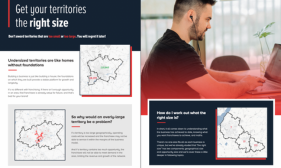April 24, 2023
When you update your territories to use the latest census, it may come as a surprise that some of your territories might have decreased in the number of households instead of increasing. This drop will almost always be down to a change in how households are defined in the census, as opposed to there being fewer households than there were in 2011.
We have identified that for most of our clients, the biggest contributor to this is that in the 2021 census, the “Household” demographic i.e. the number of households, is actually equivalent to the demographic “Households with at least one occupant” demographic in the 2011 census. Most clients will have been using the “Household” demographic for the 2011 census. There are more households in the UK than there are households with at least one occupant living in them. So this will appear to reduce the overall growth in household numbers than would be expected.
To make a judgement on the estimated like-for-like change, we recommend adding the “Households with at least one occupant” demographic to your Vision system before exporting the data for your territories. Then when you compare the old to the new, you will have a better sense of the growth.
Why is there more than one definition for a household?
This is because defining a household is not actually a simple task. The easiest explanation of this is to think about a homeowner that also owns a second home. On the night of the census they are living in their main home and so they fill out the census form for that house. They declare the second home if they stay at that other home for more than 30 days a year, but they don’t have to state where that property is specifically located. So is this counted as one household or two?
This leads to the second major point, there is a difference between a household where people DO live and a property where people COULD live. The census is interested in where people live and gathering information on the population. From a business perspective, you might be able to provide a service to a property where no one lives regularly, but it will entirely depend on the circumstances and state of any particular property.
Add into the mix students living between parents and term-time addresses, covid bringing those students back home and more people working from home, which has created some issues in how data in the census is being presented compared to what would be “normal”.





